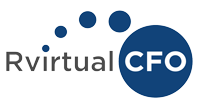As a business owner, you’re likely focused on growing your company, managing employees, and delivering value to your customers. However, securing your financial future is just as important as running your business effectively. Planning for retirement is not something to leave for “someday”—it’s a critical step to ensure that you can enjoy the rewards of your hard work long after you’ve stepped away from your business.
A well-structured retirement plan not only secures your future but also offers valuable tax benefits. For those with employees, providing retirement options can enhance your business’s appeal, helping you attract and retain top talent. Understanding your options is the first step to creating a retirement strategy that aligns with your goals.
Why Retirement Planning Matters for Business Owners
Unlike employees who might benefit from company-sponsored 401(k) plans, business owners are responsible for creating and funding their own retirement plans. While many entrepreneurs plan to rely on the value of their business as their primary source of retirement income, this approach can be risky. Markets fluctuate, industries change, and unforeseen events can impact the value of your business when you need it most.
By diversifying your retirement savings into dedicated accounts, you create a safety net that protects your future, regardless of your business’s performance. Additionally, retirement accounts can provide significant tax benefits, reducing your taxable income while helping you build long-term wealth.
Popular Retirement Account Options for Business Owners
Business owners have several retirement account options, each designed to meet different needs and circumstances. Let’s take a closer look at the most popular choices:
1. SEP IRA
The Simplified Employee Pension (SEP) IRA is one of the most popular options for self-employed individuals and small business owners who want a simple yet powerful way to save for retirement.
- Key Features: With a SEP IRA, you can contribute up to 25% of an employee’s compensation or $66,000 (for 2023), whichever is less. Contributions are entirely employer-funded, which means your employees don’t contribute.
- Advantages: The high contribution limits make it ideal for those who want to save aggressively. It’s also straightforward to set up and requires minimal ongoing administration.
- Considerations: You must contribute the same percentage of compensation for all eligible employees, which can become costly if you have a larger team.
2. Solo 401(k)
Also known as an individual 401(k), this retirement plan is specifically designed for self-employed individuals with no employees other than a spouse. It offers flexibility and high contribution limits.
- Key Features: You can make employee deferrals up to $22,500 (or $30,000 if you’re 50 or older) and employer contributions, with a total limit of $66,000 (or $73,500 if 50+).
- Advantages: Solo 401(k)s allow for both Traditional (pre-tax) and Roth (post-tax) contributions. The high limits let you maximize your retirement savings quickly.
- Considerations: This plan is only available if your business has no non-spouse employees, limiting its applicability as your business grows.
3. SIMPLE IRA
The Savings Incentive Match Plan for Employees (SIMPLE) IRA is a good choice for businesses with fewer than 100 employees. It provides a balance of simplicity and employer-employee contributions.
- Key Features: Employees can contribute up to $15,500 (or $19,000 if 50 or older), and employers are required to match contributions up to a certain percentage.
- Advantages: SIMPLE IRAs are easier to administer than 401(k)s, making them attractive for smaller businesses. They also allow both employer and employee contributions.
- Considerations: Contribution limits are lower compared to SEP IRAs or Solo 401(k)s, which may not be ideal for business owners looking to maximize savings.
4. Traditional and Roth IRAs
Individual Retirement Accounts (IRAs) are available to anyone with earned income, making them a flexible addition to other retirement plans.
- Key Features: You can contribute up to $6,500 annually (or $7,500 if you’re 50 or older). Roth IRAs offer tax-free withdrawals in retirement, while Traditional IRAs provide tax deductions on contributions.
- Advantages: These accounts are accessible and easy to set up, providing a great starting point for those new to retirement planning.
- Considerations: Contribution limits are lower than employer-sponsored plans, so they may not be sufficient as a sole retirement strategy.
How to Choose the Right Retirement Account
The best retirement account for you depends on your unique business structure, financial goals, and current circumstances. Consider these questions to guide your decision:
- Do you have employees, or are you self-employed?
- How much do you want to contribute each year?
- Do you prefer immediate tax savings (Traditional) or tax-free withdrawals in retirement (Roth)?
- How much time are you willing to spend on plan administration?
Consulting a financial advisor or tax professional can help you evaluate your options and choose the plan that aligns best with your goals. They can also help you navigate complex tax rules and ensure you’re maximizing the benefits of your chosen account.
Avoiding Common Retirement Planning Mistakes
Even with the best intentions, many business owners make mistakes when planning for retirement. Here are a few pitfalls to avoid:
- Starting Too Late: Delaying contributions means you miss out on the power of compounding interest. Start as early as possible to maximize growth.
- Underestimating Future Needs: Consider factors like longer life expectancy, inflation, and healthcare costs when setting savings goals.
- Relying Solely on Business Value: While your business may be a valuable asset, diversifying your savings reduces risk and provides financial stability.
Building a Secure Future
Retirement planning might not always feel like a top priority, but it’s one of the most important steps you can take for your long-term financial security. By understanding your options and taking advantage of the plans available to business owners, you can create a strategy that aligns with your goals and ensures a comfortable retirement.
The decisions you make today will shape your future, so take the time to explore your options, seek professional advice, and start building the financial future you deserve.

